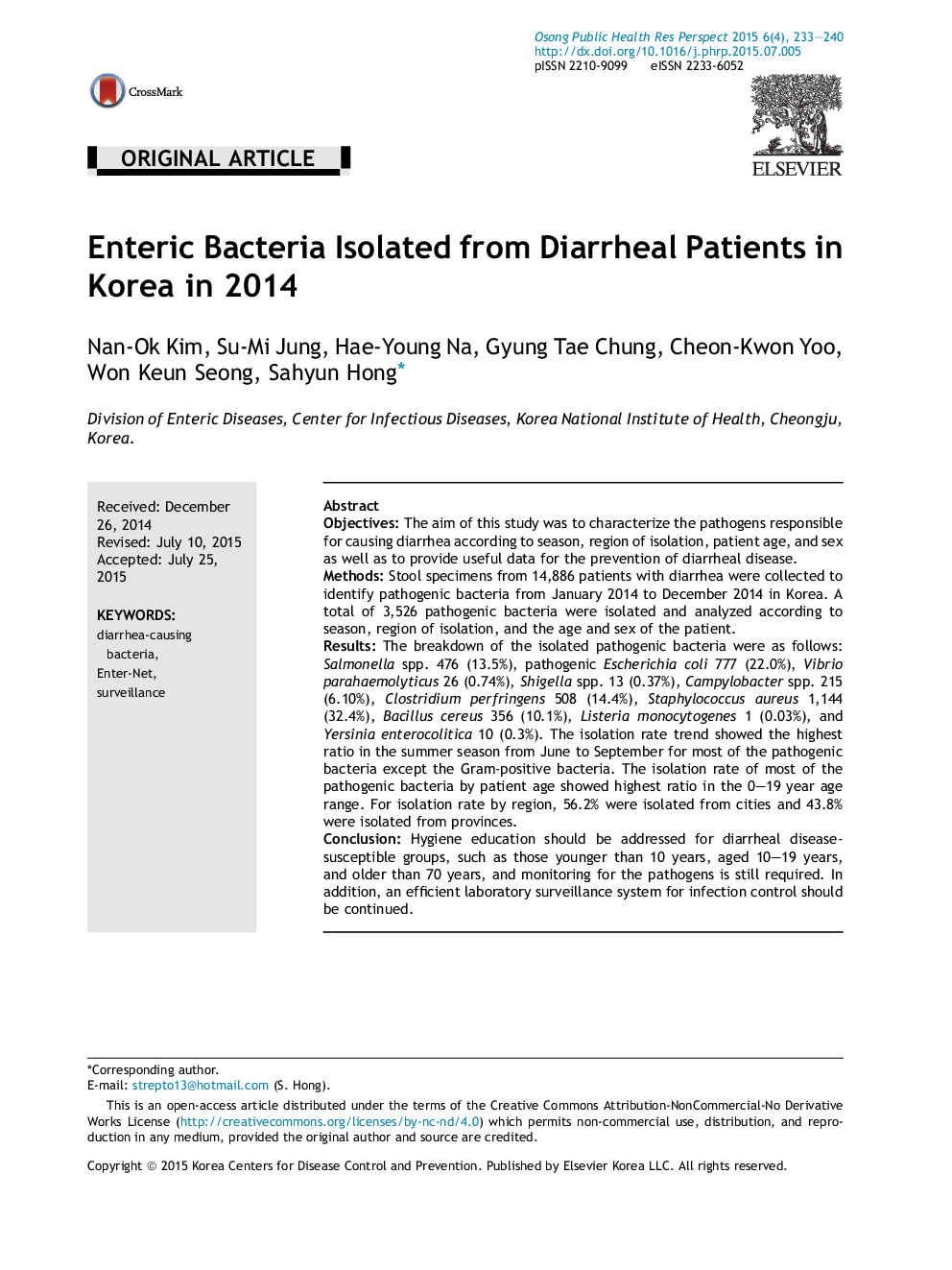| Article ID | Journal | Published Year | Pages | File Type |
|---|---|---|---|---|
| 4201914 | Osong Public Health and Research Perspectives | 2015 | 8 Pages |
ObjectivesThe aim of this study was to characterize the pathogens responsible for causing diarrhea according to season, region of isolation, patient age, and sex as well as to provide useful data for the prevention of diarrheal disease.MethodsStool specimens from 14,886 patients with diarrhea were collected to identify pathogenic bacteria from January 2014 to December 2014 in Korea. A total of 3,526 pathogenic bacteria were isolated and analyzed according to season, region of isolation, and the age and sex of the patient.ResultsThe breakdown of the isolated pathogenic bacteria were as follows: Salmonella spp. 476 (13.5%), pathogenic Escherichia coli 777 (22.0%), Vibrio parahaemolyticus 26 (0.74%), Shigella spp. 13 (0.37%), Campylobacter spp. 215 (6.10%), Clostridium perfringens 508 (14.4%), Staphylococcus aureus 1,144 (32.4%), Bacillus cereus 356 (10.1%), Listeria monocytogenes 1 (0.03%), and Yersinia enterocolitica 10 (0.3%). The isolation rate trend showed the highest ratio in the summer season from June to September for most of the pathogenic bacteria except the Gram-positive bacteria. The isolation rate of most of the pathogenic bacteria by patient age showed highest ratio in the 0–19 year age range. For isolation rate by region, 56.2% were isolated from cities and 43.8% were isolated from provinces.ConclusionHygiene education should be addressed for diarrheal disease-susceptible groups, such as those younger than 10 years, aged 10–19 years, and older than 70 years, and monitoring for the pathogens is still required. In addition, an efficient laboratory surveillance system for infection control should be continued.
